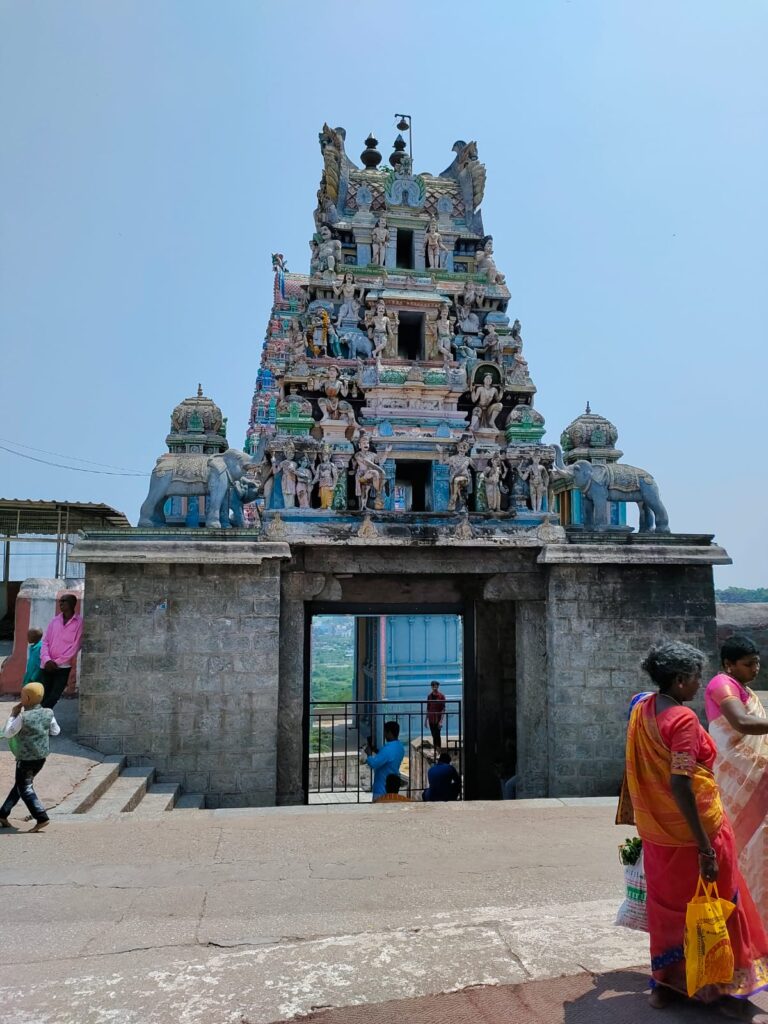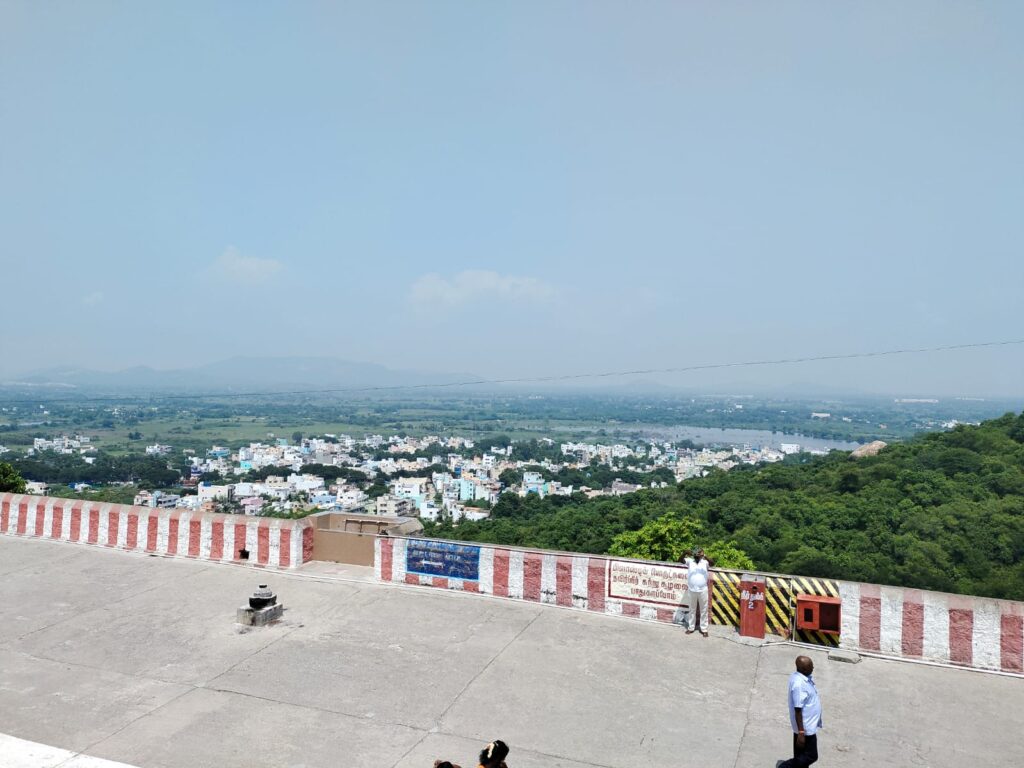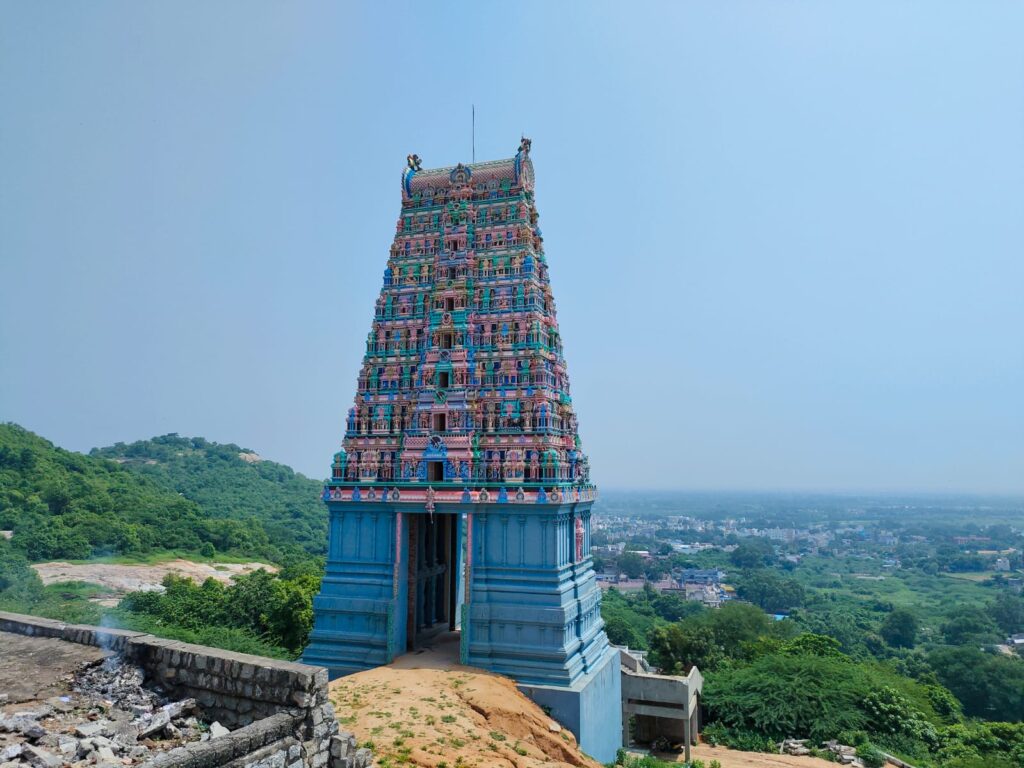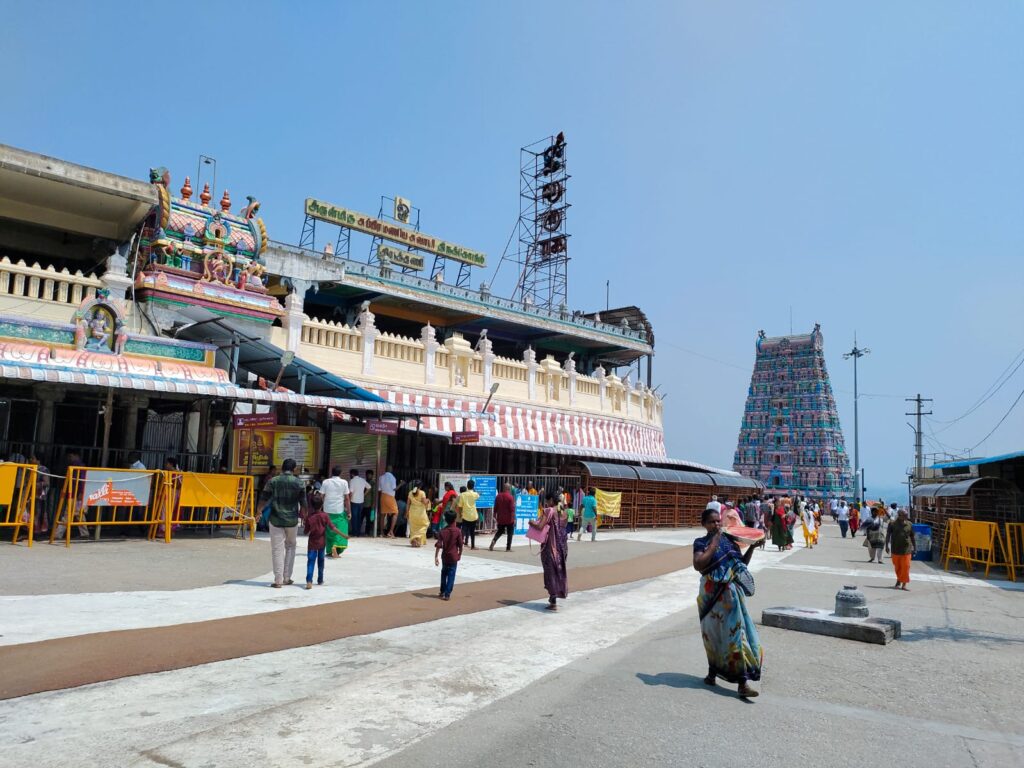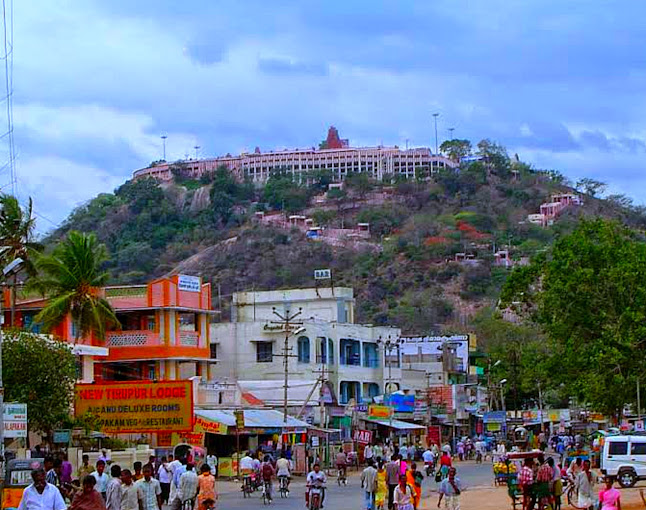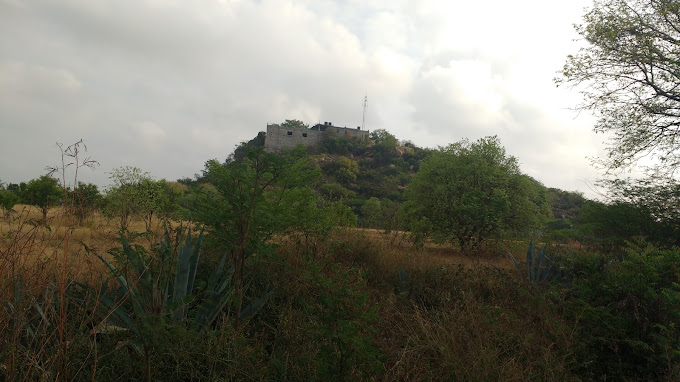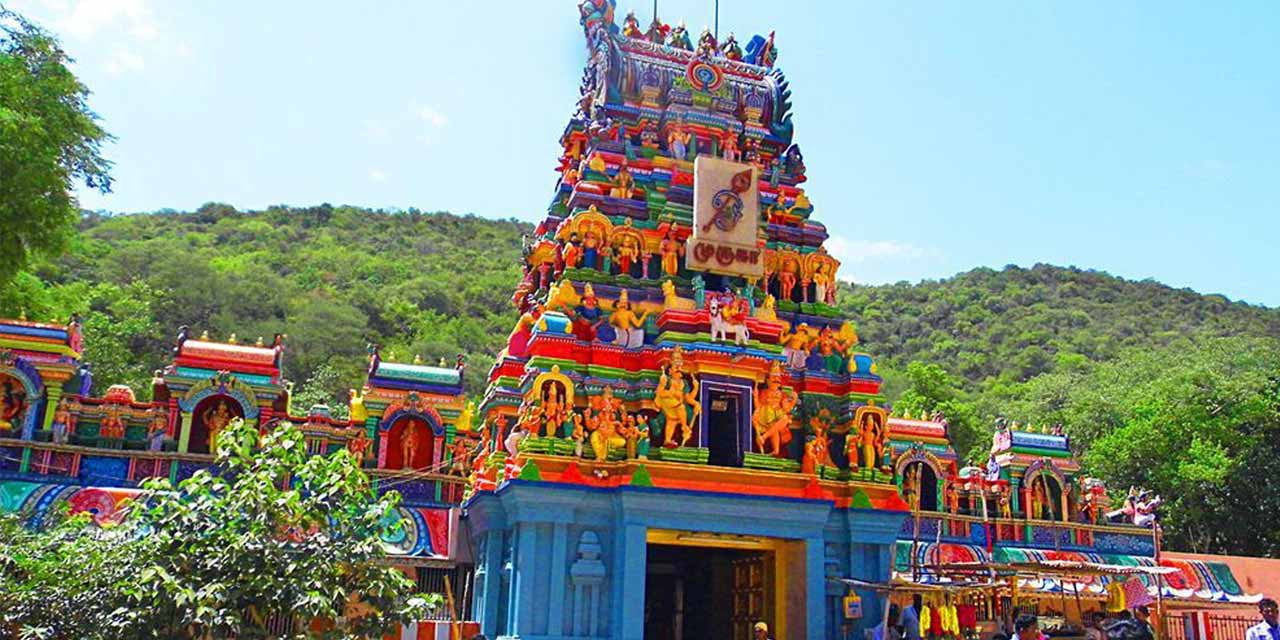The Arulmigu Subramaniya Swamy Temple in Tiruttani, Tamil Nadu, India, honors Lord Murugan. With 365 steps symbolizing each day of the year, it’s the fifth of his six sacred abodes (Arupadai Vidu). Tiruttani is 87 km from Chennai, within the Greater Chennai Metropolitan Area. In ancient times, it was known as Kundruthoradal. Unlike other temples, Surasamharam isn’t performed here; instead, it’s where Lord Murugan came to find solace after defeating the asura Tarakasura in Tiruchendur.
Mythical Narratives: Chronicles of the Temple’s Legends
According to the regional legend of the temple, Indra, the king of the devas gave his daughter Devasena in marriage to Murugan, and along with her presented his elephant Airavata as part of his offering. Upon Airavata’s departure, Indra found his wealth waning. Murugan is said to have offered to return the white elephant, however Indra bound by protocol refused to accept a gift that he had made, and insisted that the elephant face his direction, hence the image of the elephant in this temple also faces the east.
In a touching display of generosity, Murugan offered to return the white elephant, recognizing Indra’s concerns. Yet, bound by the constraints of divine protocol, Indra found himself unable to accept a gift he had previously given. Instead, he insisted that the elephant face his direction, symbolizing his unyielding commitment to tradition. Consequently, the image of the elephant in this temple also pays homage to the east, preserving the enduring legacy of this mythological tale.
Another enchanting legend entwines the temple’s history. As part of the gift for his daughter’s union, Indra is said to have presented a sacred sandalwood stone. The sandal paste prepared on this revered stone finds its application on the divine image of Murugan, and it is believed that this paste possesses medicinal properties, enriching the spiritual connection between the deity and his devotees.
Furthermore, Murugan’s divine wisdom is said to have been bestowed upon the sage Agastya, including the knowledge of the Tamil language. In this shrine, Murugan is celebrated with profound epithets like Veeramurti (depicting his valor), Jnanamurti (representing his wisdom), and Acharyamurti (honoring his role as a divine teacher). These legends and associations add depth to the temple’s sacred heritage, weaving spirituality and healing traditions into its hallowed grounds.
Architectural Marvels: A Glimpse of Divine Design
Perched atop the majestic Thanigai hill, the temple can be reached by ascending a staircase of 60 steps, enhancing the sense of spiritual ascent. Its grandeur is marked by a five-tiered gopuram (tower) and is organized into four precincts, each holding its own sacred significance.
The temple is blessed with numerous water bodies, each carrying its own mystical allure and symbolism. Within the temple complex, two prominent shrines stand in reverence – the form of Murugan as Shaktidharar, exuding divine energy, and the separate shrines dedicated to Valli and Devasena, encapsulating the unity of devotion and love.
This temple is not just a place of worship but a testament to the sacred bond between divinity and nature, offering a spiritual journey marked by steps, structures, and serene waters.
Explore Temple Location on Google Maps
Visual Journey: Captivating Temple Gallery
